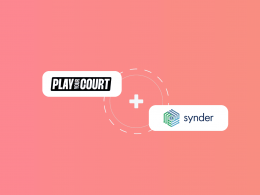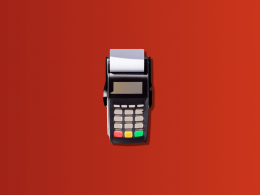As a business owner, it’s crucial to understand the diverse tools and documents that streamline your transactions. One such document is the proforma invoice.
Diving deeper into this topic will provide you, a diligent business owner, with insights into ‘what is a proforma invoice?’ as well as when and how to use it effectively. We will also cover the advantages and potential pitfalls of using proforma invoices, and how they interact with other financial and business documents.
It’s not just about understanding definitions but about leveraging this knowledge to improve clarity, build trust with your clients, and streamline your business operations. Whether you’re dealing with international clients, handling large projects, or even just setting the stage for local transactions, understanding the nuances of a proforma invoice is pivotal. So, buckle up as we explore its intricacies and real-world applications, ensuring you’re well-equipped to handle any business scenario with confidence.
Ready to simplify your financial processes? Try Synder, the ultimate solution for smart and seamless bookkeeping. Elevate your business transactions—Start with Synder today!
What is a proforma invoice?
At its core, a proforma invoice is a preliminary billing document. It provides both the seller and the buyer with a clear overview of what the transaction will entail. Unlike a finalized bill, it details the goods or services you intend to provide, their prices, and other important terms of the deal before the actual transaction takes place. Essentially, it’s a commitment to goods or services at specified prices and terms.
You might wonder, “How does this differ from the typical invoices I send or receive?” A standard, or commercial, invoice, on the other hand, is a request for payment. It comes after the goods or services have been delivered or completed. It’s an official record of the sale and is legally binding. In contrast, the proforma invoice is more of a “heads up” or an advance notice. While it looks very much like a real invoice, it’s not a demand for payment. Instead, it sets the stage for the transaction, laying out expectations for both parties. It’s like giving a sneak peek of what the final bill will look like.
Proforma invoice in trade: A glance at the past
The concept of the proforma invoice isn’t a new invention; its roots trace back to traditional trade practices. Historically, merchants and traders required a tool to communicate intended transactions before the actual exchange took place, especially in scenarios involving complex logistics or international barriers. The proforma invoice emerged as a response to this need, acting as a “proposed agreement” or a precursor to the finalized deal.
Over time, as commerce evolved and expanded across borders with technological advancements, so did the proforma invoice. Initially serving as simple handwritten commitments, they now often come in sophisticated digital formats, accommodating various tax systems, legal prerequisites, and industry standards.
The main features of a proforma invoice
Now let’s look at the type of information that should (or could) be included in a proforma invoice.
List of typical components
While every business transaction is unique, certain elements in a proforma invoice remain consistent. As you draft one, ensure it includes fundamental details such as:
- Buyer and seller information: Names, addresses, and contact details are essential.
- Date and proforma invoice number: For tracking and reference.
- Description of goods or services: Clarity here avoids future disputes.
- Prices and quantities: The essence of your intended transaction.
- Terms of sale: Conditions like payment methods, delivery dates, and other specifications.
- Expiry date: The validity period of the proforma’s terms.
These components build the backbone of your proforma invoice, making it a clear, comprehensive document.
Remember, the proforma invoice is a flexible tool. Depending on your industry or specific transaction, you might consider adding:
- Shipping details: Weight, method, and expected shipping costs if relevant.
- Bank details: Especially if dealing with international clients.
Including such details can elevate the clarity and professionalism of your document, especially in complex transactions.

Differences in format across industries and countries
No two businesses are alike, and neither are their proforma invoices. Industries might have specific elements that need highlighting, such as batch numbers in pharmaceuticals or fabric details in textiles.
Moreover, when dealing internationally, be attuned to the country-specific requirements, like tax codes or unique legal stipulations. This adaptability underscores valuable advice: always tailor your proforma invoice, ensuring it aligns with both your industry’s best practices and the specificities of the region you’re transacting with.
Purposes and uses of proforma invoices
We already touched upon the reasons to use proforma invoices, so let’s dig deeper into this topic.
Preliminary step before finalizing a sale
As a business owner, you know that every sale often involves a series of interactions before finalizing the deal. The proforma invoice serves as a precursor to this finalization. It’s an initial agreement that outlines the terms of the transaction, ensuring both parties are aligned in their understanding. Before you or your client makes any commitments, the proforma invoice lays out the “blueprint” of the sale. Think of it as a rough draft that, once agreed upon, can then be polished and turned into a binding contract or official invoice.
Facilitation of customs and import/export processes
If you’re involved in international trade, the importance of smooth customs clearance cannot be overstated. A proforma invoice can be a game-changer in this domain. By providing this document to customs officials, you’re essentially giving them a preview of the commercial invoice, ensuring they have the necessary details for preliminary evaluations. It expedites the process and can prevent potential hiccups down the line. Be proactive: familiarize yourself with the requirements of the importing country and ensure your proforma invoice meets those needs.
Setting expectations between buyer and seller
The proforma invoice acts as a communication tool, setting clear expectations between you and your client. It delineates the terms, prices, and descriptions of the proposed transaction, reducing the chance of misunderstandings or disputes. By presenting a proforma invoice, you’re saying, “Here’s what I can offer, under these terms.” It provides a foundation upon which negotiations or adjustments can then take place.
Basis for securing financing or letters of credit
Financial institutions often require evidence of pending transactions before granting financing or issuing letters of credit. Here, the proforma invoice shines as a credible document, showcasing the legitimacy and specifics of the intended business deal. If you’re seeking external financing, having a well-drafted proforma invoice can bolster your case, assuring lenders of the genuineness of your transaction.
Differences between a proforma invoice and other related documents
As a savvy business owner, distinguishing between different transactional documents is crucial. The proforma invoice stands distinct, yet can be confused with other similar papers. Let’s demystify its unique characteristics compared to related documents.
Proforma invoice vs. commercial invoice
While both proforma and commercial invoices detail goods or services to be sold, their roles in the transaction process differ. A proforma invoice is a preliminary document that outlines the expected terms and details of a sale. It’s like a draft, indicating what the seller intends to supply and on what terms. Conversely, a commercial invoice is issued post-sale, serving as a demand for payment and a binding record of the transaction. While a proforma can be amended based on negotiations, a commercial invoice signifies a finalized deal. Always ensure you’re using the right invoice for the right stage in your business dealings.
Proforma invoice vs. purchase order
The distinction here lies primarily in the initiator. While a proforma invoice is sent by the seller to propose the terms of a sale, a purchase order is issued by the buyer, detailing the items they wish to purchase and the terms they’re willing to agree upon. In essence, a proforma invoice is an offer, while a purchase order is an acceptance or counteroffer. Recognizing this difference can help streamline your communications and negotiations, ensuring both parties are on the same page.
Proforma invoice vs. quotation or estimate
These documents can often seem interchangeable, but subtle nuances set them apart. A quotation or estimate generally provides a potential buyer with an idea of costs for specified goods or services, often without detailed terms of sale. It’s a ballpark figure, sometimes subject to change based on various factors. A proforma invoice, on the other hand, is more detailed and comprehensive, outlining not just the price but other transaction terms. When you provide a proforma invoice, you’re presenting a clearer picture of the intended transaction, moving a step closer to finalizing the deal.
Best practices when creating a proforma invoice
Crafting a proforma invoice requires precision and clarity. To ensure it serves its intended purpose and resonates professionalism, let’s explore the best practices one should adopt.
Mentioning the expiration date or validity period
Unlike commercial invoices, proforma invoices are proposals and may not remain valid indefinitely. It’s a best practice to include an expiration date, specifying how long the proposed terms are valid. This adds a sense of urgency and clarity, ensuring the buyer knows the timeframe within which they should act.
Keeping records for all issued proforma invoices
Every proforma invoice you issue should be logged and stored, even if it doesn’t result in a finalized sale. Such records can provide insights into past negotiations, offer a reference for future deals, and even assist in financial tracking or auditing processes.
Including necessary disclaimers or terms
Given the non-binding nature of proforma invoices, it’s wise to include disclaimers. Clearly state that the document is not a legal obligation for either party and that the terms may change based on subsequent negotiations. Such transparency prevents misunderstandings and safeguards your interests.
How does a proforma invoice fit into the sales document cycle?
The sales document cycle, often referred to as the order-to-cash process, outlines the sequence of steps involved from the initiation of a sale until the point where the business receives payment and completes the sale transaction. This cycle provides a framework for businesses to manage and track their sales processes efficiently.
Here’s a step-by-step breakdown of the typical sales document cycle:
- Customer inquiry: Before making a purchase, a potential customer might inquire about product details, prices, delivery times, etc.
- Quotation (offer): In response to the inquiry, the seller issues a quotation or an offer detailing the products, prices, terms and conditions, and other relevant information.
- Sales order: If the customer wants to proceed, they place an order. The seller then creates a sales order document, which confirms the details of the purchase.
- Order acknowledgment: The seller acknowledges receipt of the sales order, indicating they have begun processing it.
- Delivery note: Once the goods are ready for shipment, a delivery note is produced. This document lists the items in the shipment and usually accompanies the goods to their destination.
- Proforma invoice: Before the final invoice, a proforma invoice might be sent as a preliminary document, giving the customer an overview of what the charges will likely be.
- Shipping & dispatch: The products are packaged and shipped to the customer’s specified location.
- Commercial invoice: Once the goods are shipped or the service is rendered, a commercial invoice is generated. This is the official billing document requesting payment from the customer.
- Receipt of goods: The customer receives the goods and checks them against the delivery note and invoice to ensure everything is correct.
- Payment: Based on the terms agreed upon (e.g., net 30 days), the customer makes a payment. The method might vary: credit, wire transfer, check, online payment, etc.
- Payment acknowledgment: Upon receiving payment, the seller sends an acknowledgment or receipt to the customer, confirming the completion of the transaction.
- Sales & payment recording: The seller records the sales transaction and payment in their accounting system, updating inventory, accounts receivable, and revenue accounts as necessary.
Throughout this cycle, it’s crucial for companies to maintain clear communication with customers, ensure timely processing, and keep accurate records to build trust and ensure smooth transactions.
FAQs: Invoice guide for proforma invoices in business
In this FAQs section, we will answer questions and provide information about proforma invoicing for companies big and small.
How can a proforma invoice benefit my business?
A proforma invoice can establish clear terms between you and your customer, helping avoid potential disputes. It’s also beneficial for setting clear expectations, especially in international transactions, and can be a prerequisite for certain customs or shipping processes.
Can I use a proforma invoice for tax purposes?
Typically, proforma invoices are not used for tax or official reporting, as they aren’t final sales documents. You should rely on official invoices for public accounting and tax purposes.
How do accounts payable relate to proforma invoices?
Accounts payable (AP) represents the amounts that a company owes to its suppliers for goods or services that have been received but not yet paid for. Proforma invoices, on the other hand, are preliminary invoices sent by a seller to a buyer before a product or service is delivered or the work is completed. They are not final bills or requests for payment. In other words, while accounts payable and proforma invoices are related in the broader context of business transactions, they serve different purposes. Proforma invoices provide a preliminary view of an upcoming transaction, while AP represents actual financial obligations stemming from finalized transactions.
Is it necessary to number my proforma invoices?
While not mandatory, numbering proforma invoices helps in keeping your documents organized and can be useful for reference, especially if there’s a transition from a proforma invoice to a finalized invoice.
What should I do if my client requests changes after receiving a proforma invoice?
Since a proforma invoice isn’t a binding document, you can easily make adjustments based on further negotiations or client requests. It’s designed to be flexible and cater to such changes before finalizing the transaction.
How can I ensure my proforma invoice appears professional?
Ensure it’s well-structured, clear, and free of errors. Include all necessary details like your business logo, contact information, product/service descriptions, and terms of the deal. Using a professional template or software can also enhance its appearance.
If a client agrees to the terms on a proforma invoice, what’s the next step?
Once both parties agree, you can move forward with the transaction—deliver the goods or services and then issue a final, official invoice for payment.
How do proforma invoices aid in international trade?
In international transactions, proforma invoices can help in understanding import duties, securing letters of credit, or fulfilling other customs documentation requirements. They set clear terms for both parties, which can be especially crucial when dealing across borders and different regulatory environments.
How does a proforma invoice relate to my bank account or financial transactions?
A proforma invoice by itself does not directly impact your bank account, as it is not a final billing document. However, in international trade or larger transactions, banks might use a proforma invoice as a basis to issue letters of credit or facilitate prepayment arrangements. It’s essential to present a clear and detailed proforma invoice if you’re seeking financial backing or guarantees from a bank based on the proposed transaction.
Learn more about Business bank account for LLC and Time interest earcned ratio.
Concluding thoughts
Your journey in the business realm is filled with choices, challenges, and opportunities. When it comes to proforma invoices, the advice is simple yet profound: be meticulous, be transparent, and be consistent. Whether you’re issuing or receiving one, treat it with the respect and attention it deserves.
Both businesses and consumers should approach proforma invoices with a blend of trust and caution. While they outline proposed terms, they aren’t set in stone. It’s essential to ensure mutual understanding, be open to negotiations, and always, always verify details for accuracy. Recognize that while it’s a potent tool, the efficacy of a proforma invoice hinges largely on how it’s crafted and used.
By ensuring best practices, you’re not just refining a single transaction, but fortifying the very foundations of your business relationships. Embrace the proforma invoice, not just as a document, but as a reflection of your commitment to excellence, clarity, and mutual growth.
Want to learn about invoice management software? Find out how a past-due invoices system benefits cash flow management.







.png)
